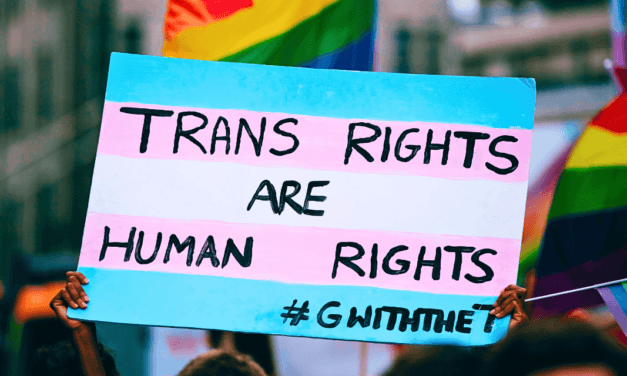This article first appeared in the CHRISTIAN RESEARCH JOURNAL, volume 39, number 05 (2016). The full text of this article in PDF format can be obtained by clicking here. For further information or to subscribe to the CHRISTIAN RESEARCH JOURNAL go to: http://www.equip.org/christian-research-journal/
Since the launch of social media photo-sharing app Instagram in October 2010, the trendy service has grown exponentially. According to PC World, by the end of 2010, there were more than 1 million active “Instagrammers” online; by the end of 2011, this number had soared to more than 10 million; by 2012, it was more than 30 million; and by the end of 2014, Instagram cofounder Kevin Systrom announced that the app had been accessed by more than 300 million users in the month of December alone.1
For readers unfamiliar with the platform, Instagram is a simple, image-based social network used for both taking and sharing pictures and short videos with friends or followers. The app also allows for basic photo editing processes such as the addition of filters. Users interact with each other through liking, commenting on, or sharing each other’s pictures. Digital Buzz calculates that the activity of Instagram users is increasing exponentially as well; as of July 2011, 100 million photographs had been uploaded to the app. Only a month later, this total had climbed to 150 million. By May 2012, the image count for Instagram had exceeded 1 billion, and it is now estimated that approximately fifty-eight photographs are added and a new user registered every second. Among these users, 24 percent report logging onto the app several times per day.2 To say that the use of images proves an effective organizing force for the formation of relationships and community online is an understatement.
Additionally, it is a force that appears to appeal to a relatively diverse population. Business Insider has reported that 68 percent of Instagrammers are female, and 32 percent are male; that 17 percent of adult users live in urban areas, while 11 percent live in suburban or rural areas; that 15 percent of users have an income of under $30,000 per year, 14 percent make $30,000 to $50,000 per year, and 12 percent make over $50,000 per year; and that 23 percent of users have some level of college education, 18 percent are college graduates, and 15 percent have a high school diploma. Around 70 percent of users are from outside the United States. The app does, however, appear to appeal predominately to a younger generation: 90 percent of users are under thirty-five years old, and, among American teens, it is considered the most important of all the available social networks.3
With this in mind, it is interesting to wonder what precisely the appeal of images in the context of Instagram is for users and, perhaps more importantly, what is the most ethical approach to Instagram for conscientious users.
Perhaps to wonder about ethics in the context of something as central to pop culture and as popularized by celebrity profiles and advertisement as Instagram seems fruitless. However, as with any trend that proves durable and especially in the case of a trend that is dominated by youth, employing a thoughtful approach can prove valuable. To this end, I would like to offer three warnings and three opportunities for Instagram users interested in taking part in the Instagram fad with integrity.
INSTAGRAM AND THE PLEASURE LOOP
First, Instagrammers must be savvy to the way the app may become an unhealthy preoccupation. Those who are already adoptees of the platform know how easy it is to open Instagram and become entirely absorbed in scrolling through pictures for what feels like a few seconds but might easily become twenty or thirty minutes or longer. According to Psychology Today, “The culprit is dopamine.”4
Essentially, the appeal of Instagram can become predominately whether and to what extent our posts are being responded to by others. Waiting for the notification that our pictures have been liked or commented on can quickly become addictive. As Dr. Susan Weinschenk writes, “Interestingly brain scan research shows that the brain has more activity when people are anticipating a reward than getting one….It is possible for the dopamine system to keep saying ‘more more more,’ causing you to keep seeking even when you have found the information.”5
This pleasure in praise has been recognized by theologians as well. Theologian John Chrysostom, for example, wrote, “I do not know whether anyone has ever succeeded in not enjoying praise. And, if he enjoys it, he naturally wants to receive it. And if he wants to receive it, he cannot help but being distraught at losing it. Those who are in love with applause have their spirits starved not only when they are blamed off-hand, but even when they fail to be constantly praised.” This observation shows how sensitive humans are when it comes to our need for affirmation, and apps such as Instagram can easily serve as fast, though ultimately unsustaining, sources of affirmation. As a result, if we do not moderate our use of time on Instagram, and if we do not prioritize the positive feedback and instant high our interactions on Instagram give us, it can lead to unproductivity in other important areas of our life.
INSTAGRAM AND COVETING
Second, because Instagram uses images as the medium through which we share our lives and interests with friends, there is a temptation to present only the best or most cultivated versions of ourselves; in other words, a false reality. Focusing on creating a desirable life online does not, however, do anything to satisfy our desire for a desirable life in reality and can, in fact, make us even less satisfied with our everyday circumstances.
While the artistry available to us through filters and editing options can be used to create beautiful images, we should always give a preference toward truthfulness and honesty in the images we choose to share. As the poet Anne Bradstreet wrote, “Sweet words are like honey, a little may refresh, but too much gluts the stomach.”
INSTAGRAM AND WHAT WE VALUE
Third, an Instagram user of even the shortest length of time will have recognized that the platform is dominated by advertisement and that the most popular Instagrammers to follow are celebrities. To get a sense of the extent to which this is the case, note that Instagram is anticipated to collect nearly 600 million dollars in mobile ad revenues worldwide this year and nearly 3 billion dollars by 2017, and 85 percent of top brands are using Instagram for advertisement. Additionally, the top five most-followed Instagram accounts are all pop celebrities: Selena Gomez has more than 60 million followers, as do Taylor Swift, Kim Kardashian, Ariana Grande, Beyoncé Knowles, and Justin Bieber. As a result, one’s Instagram timeline can become an endless stream of product promotion and images of unrealistic, expensive lifestyles and unattainable standards of appearance.
With this in mind, we should keep a conscientious eye toward what we “value” when we choose to follow a celebrity or product page. If we think of following an Instagrammer’s page as an endorsement of sorts, rather than as just a neutral act of no consequence, we likely will find our timelines full of more uplifting, realistic standards: friends we know and positive and true representations of life. A good question to ask ourselves as we choose whom to follow and with whom to interact is: What are we valuing more, people/relationships or the world?
INSTAGRAM AS SOCIAL NETWORK
On the flip side, while there are certainly aspects of Instagram to be wary of, Instagram also offers users some wonderful opportunities. First, Instagram is a social network. Because it is image based, it offers us access to each other’s life in a way that simple text-based interactions do not. We effectively can see each other’s life—in images and short videos—and partake in the day-to-day experiences of our friends and family beyond geographic bounds. Instagram also offers us the opportunity to forge new relationships that can quickly become intimate.
INSTAGRAM AS CELEBRATION
Second, Instagram offers users a way of preserving and celebrating ephemeral moments of life. As the wonderful fiction writer Eudora Welty once said, “A good snapshot keeps a moment from running away,” and this is exactly the function Instagram serves. A cup of hot coffee, a son or daughter running through a sprinkler, a ladybug crawling over a leaf, Instagram thrives off the capturing and sharing of the ephemera of our daily lives. No other platform available to us online allows the circulation of this type of moment so effectively. While on the one hand, Instagram is a place where superficial values can thrive, it is also a place where simple beauty can be admired. As the great essayist G. K. Chesterton wrote, “Man is more himself, man is more manlike, when joy is the fundamental thing in him, and grief the superficial. Melancholy should be an innocent interlude, a tender and fugitive frame of mind; praise should be the permanent pulsation of the soul.” If we keep this in mind, the type of images we share can draw attention to the loveliness or curiosity of life in its simplicity rather than promoting a striving for a life that is different or more materially rich. If we think of Instagram as an opportunity to share and encourage joy, we will be using it most productively.
INSTAGRAM AS ART
And finally, Instagram is a medium for art. As the writer Johann Wolfgang von Goethe wrote in Wilhelm Meister’s Apprenticeship, “A man should hear a little music, read a little poetry, and see a fine picture every day of his life, in order that worldly cares may not obliterate the sense of the beautiful which God has implanted in the human soul.” While the filters available to users could be seen as a way of manipulating reality and making our appearances and lives look better than they are, they also allow us to use our creativity. The creation of art is a valuable and good project, and Instagram encourages us to view life from different angles and metaphorically “in a different light.” If we understand Instagram as an opportunity to use our uniquely human powers of imagination and creativity, then our motive in editing our images settles on solid theological ground, for the effort to showcase the divine gift that is the human mind is a noble endeavor by any standard.
As communication scholar Marshall McLuhan famously noted, “The medium is the message.” Instagram—as does any social media platform—presents both opportunities and traps for conscientious users concerned with an ethical approach to networking. Because of the materialistic focus of Instagram in particular and the centrality of images, which hold an especially compelling appeal to the human eye and mind, setting a standard for one’s Instagram use can be important in making the experience one that is uplifting and wholesome. Images communicate directly and powerfully, more so even than words, and have an ability to stick with us and shape our thoughts with incredible impact. Both the users we choose to follow and interact with and the material we choose to share should be considered carefully. While the platform itself might be morally neutral, its effects and the manners in which it is used have potential moral implications that should be considered and factored in carefully. My hope is that specifying the dangers and strengths of Instagram will help users be able to enjoy and thrive in their experience of the medium rather than regularly logging out feeling defeated, worthless, or weak.
Amber M. Stamper is an assistant professor of English in the Department of Language, Literature, and Communication at Elizabeth City State University. She received a PhD from the University of Kentucky, an MFA from the University of Virginia, and an MA and BA from Johns Hopkins University.
NOTES
- http://www.pcworld.com/article/2025801/facebooks-instagram-says-it-has-90-millionmonthly-active-users.html.
- http://www.digitalbuzzblog.com/infographic-instagram-stats/.
- http://www.businessinsider.com/instagram-demographics-2013-12.
- https://www.psychologytoday.com/blog/brain-wise/201209/why-were-all-addicted-texts-twitter-and-google.
- Ibid.









